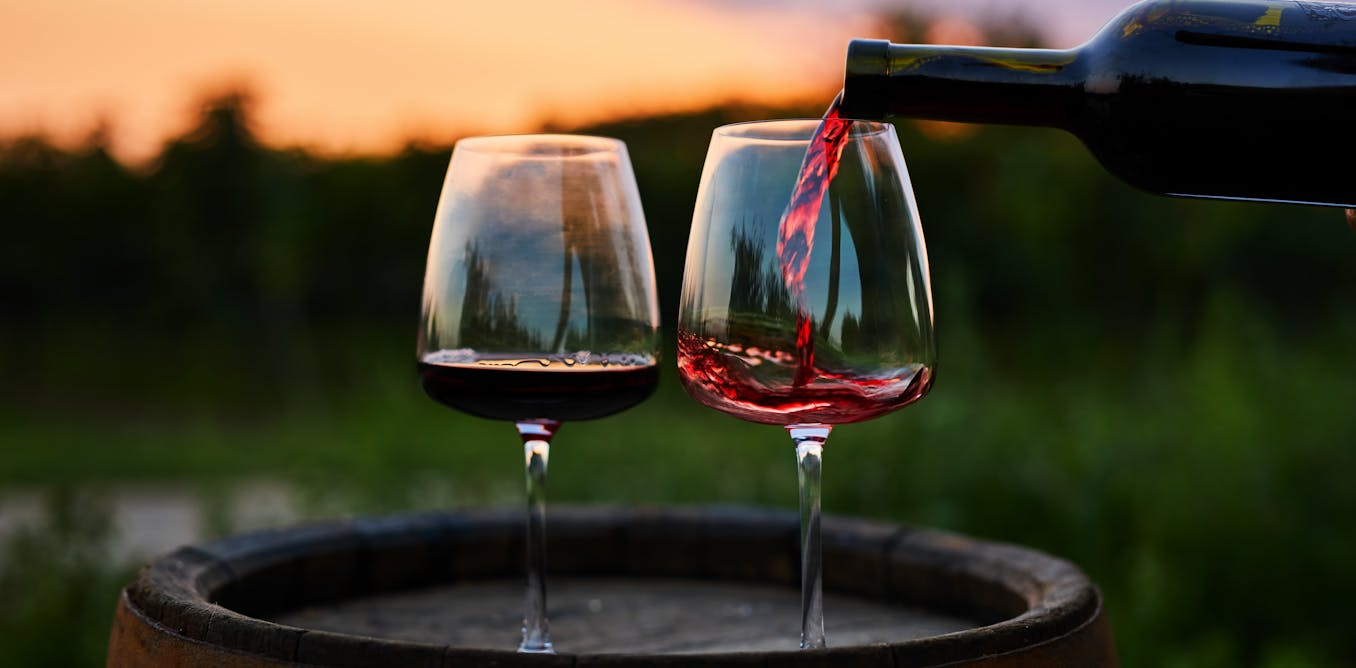Science
Uncovering Wine’s DNA: The Origins of Cabernet Sauvignon and Chardonnay

Wine has been an integral part of Mediterranean culture for thousands of years, with its origins tracing back to the Palaeolithic era. As fermentation transforms pressed grape juice into this complex beverage, a variety of chemical compounds contribute to its flavor and aroma. Today, advanced DNA analysis techniques are shedding light on the genetic origins of popular grape varieties, including Cabernet Sauvignon and Chardonnay, revealing fascinating insights into their ancestry.
Tracing Cabernet Sauvignon’s Parentage
The story of Cabernet Sauvignon begins with a question posed by plant geneticist Carole P. Meredith in the 1990s: Can we trace the genetic source of this celebrated grape? Using forensic genetics, Meredith identified and characterized short variable repeat sequences in the genome of the common grapevine, known as Vitis vinifera. She meticulously analyzed various strains, ultimately concluding that Cabernet Sauvignon is a direct descendant of the red grape Cabernet Franc and the white grape Sauvignon Blanc. This cross-pollination likely occurred in the 17th century within the Bordeaux region of France.
The process of cultivating grapevines typically involves asexual reproduction, leading to the widespread belief that all Cabernet Sauvignon vines are genetically identical clones. This method of propagation ensures consistency in flavor and quality across extensive vineyards.
Chardonnay and Its Lesser-Known Parent
Following her success with Cabernet Sauvignon, Meredith and her team turned their attention to Chardonnay, the second most widely grown grape variety globally. Their research revealed that Chardonnay is a hybrid of the renowned red grape Pinot Noir and a lesser-known white grape called Gouais Blanc. The latter was introduced to Gaul by the Roman emperor Probus, who promoted wine cultivation despite Gouais Blanc’s reputation for producing lower-quality wines. This random cross-pollination likely took place during the Middle Ages when both varieties were commonly cultivated in France.
Additionally, the same parent grapes have given rise to other notable varieties, including the red Gamay grape, adding further depth to the genetic tapestry of wine.
The Impact of Genetic Research on Wine Production
Research into grape genetics continues to evolve, revealing the origins of various grape varieties cultivated globally. For instance, Spanish researchers have identified that the Tempranillo grape, widely grown on the Iberian Peninsula, is a cross between the Albillo Mayor and the less popular Benedicto varieties. Meanwhile, the Syrah grape, often marketed under the name Shiraz, hails from France, and its name’s exotic association with the Persian city of Shiraz has served as a compelling marketing tool.
The genetic knowledge derived from these studies is not merely academic; it serves practical purposes. Germplasm banks safeguard years of natural and artificial selection, preserving genetic diversity to enhance desirable traits in cultivated plants. This knowledge helps identify specific genetic variants that contribute to sensory characteristics in wine or confer resistance to pests.
As grapevine genomes have been fully sequenced, the potential for targeted genetic engineering becomes a reality. This advancement allows for the introduction of new characteristics without traditional cross-pollination methods. It is anticipated that the future of oenology will intertwine with biotechnology, aiming to develop grape varieties that are more resilient to climate change and extreme weather conditions while also producing wines with unique sensory traits.
In the wake of her groundbreaking research, Carole P. Meredith has shifted her focus from laboratory analysis to cultivating her own vineyards and producing Syrah wine in California’s Napa Valley. Her wines have garnered acclaim from connoisseurs, further exemplifying the rich legacy of genetic exploration in the world of wine.
The ongoing study of grape genetics not only enhances our understanding of wine’s storied past but also sets the stage for innovations that could redefine the beverage in the years to come.
-

 Top Stories2 months ago
Top Stories2 months agoTributes Surge for 9-Year-Old Leon Briody After Cancer Battle
-

 Entertainment3 months ago
Entertainment3 months agoAimee Osbourne Joins Family for Emotional Tribute to Ozzy
-

 Politics3 months ago
Politics3 months agoDanny Healy-Rae Considers Complaint After Altercation with Garda
-

 Top Stories3 months ago
Top Stories3 months agoIreland Enjoys Summer Heat as Hurricane Erin Approaches Atlantic
-

 World4 months ago
World4 months agoHawaii Commemorates 80 Years Since Hiroshima Bombing with Ceremony
-

 Top Stories2 months ago
Top Stories2 months agoNewcastle West Woman Patricia Foley Found Safe After Urgent Search
-

 Top Stories4 months ago
Top Stories4 months agoFianna Fáil TDs Urgently Consider Maire Geoghegan-Quinn for Presidency
-

 World4 months ago
World4 months agoGaza Aid Distribution Tragedy: 20 Killed Amid Ongoing Violence
-

 World4 months ago
World4 months agoCouple Convicted of Murdering Two-Year-Old Grandson in Wales
-

 World4 months ago
World4 months agoAristocrat Constance Marten and Partner Convicted of Infant Murder
-

 Top Stories3 months ago
Top Stories3 months agoClimbing Errigal: A Must-Do Summer Adventure in Donegal
-

 Top Stories3 months ago
Top Stories3 months agoHike Donegal’s Errigal Mountain NOW for Unforgettable Summer Views









